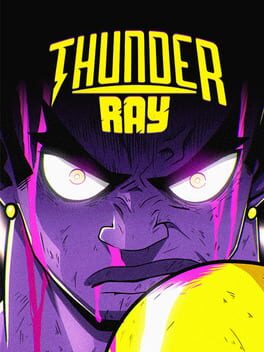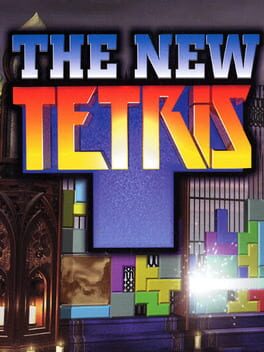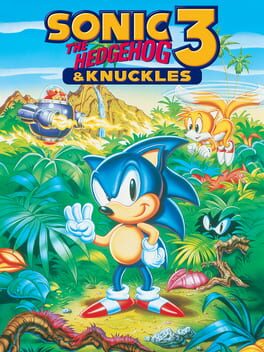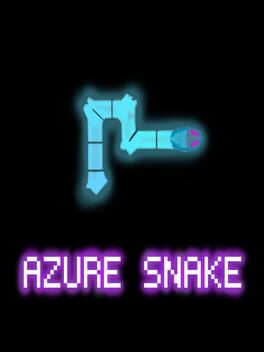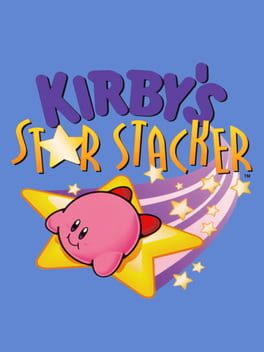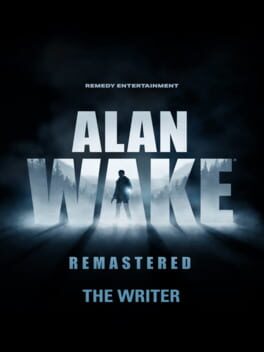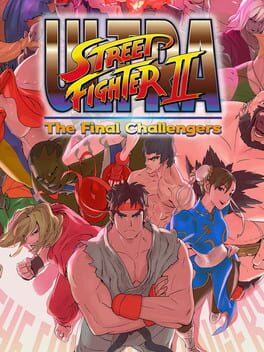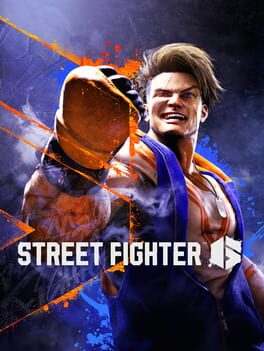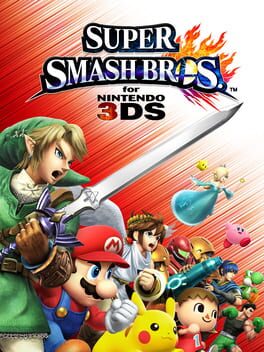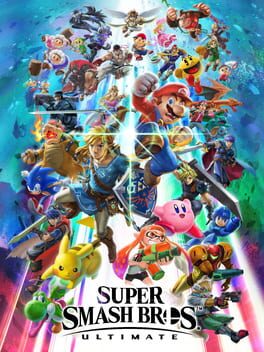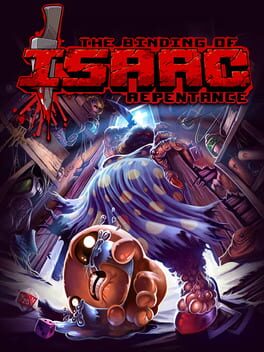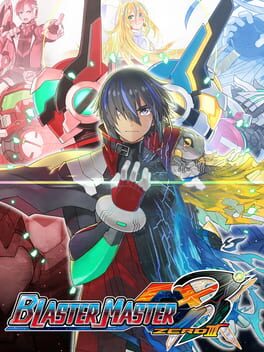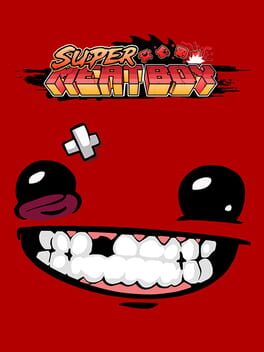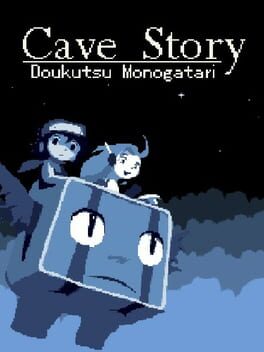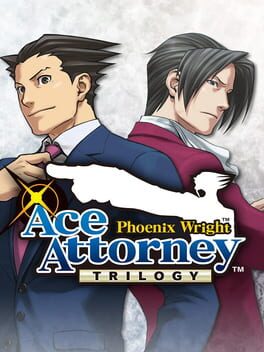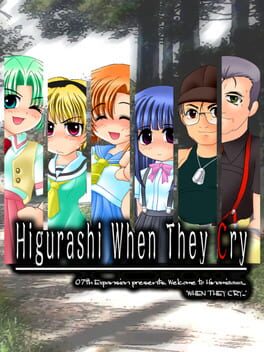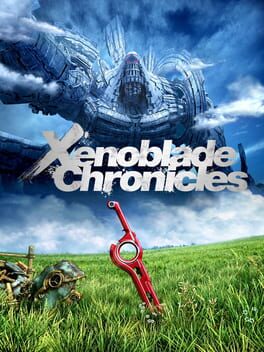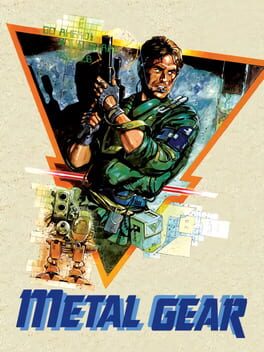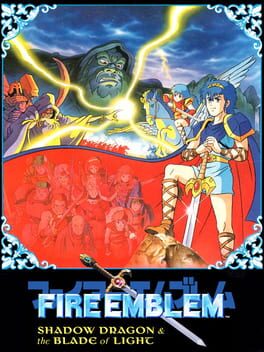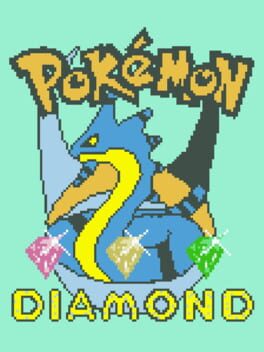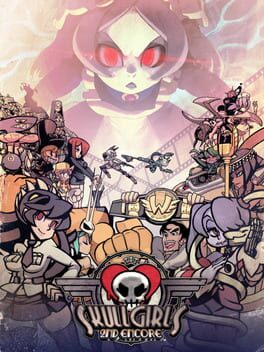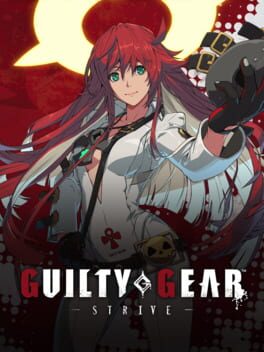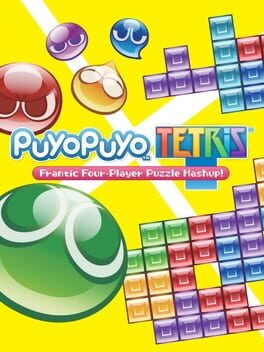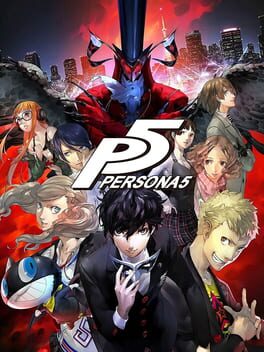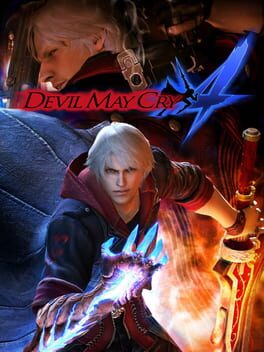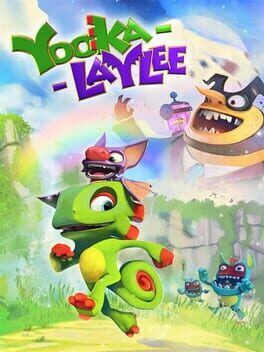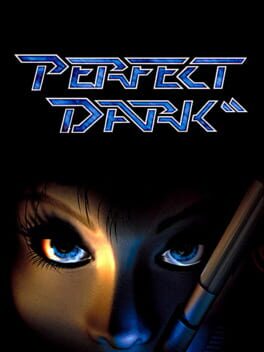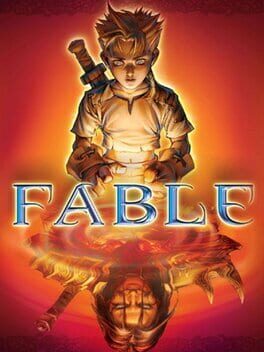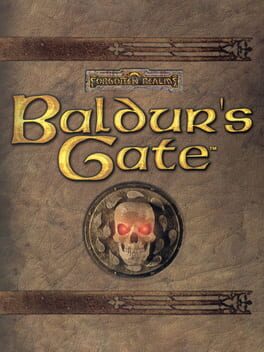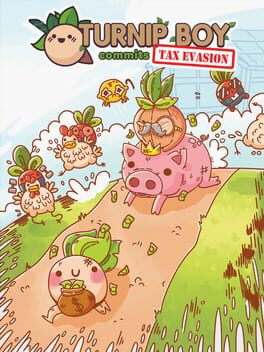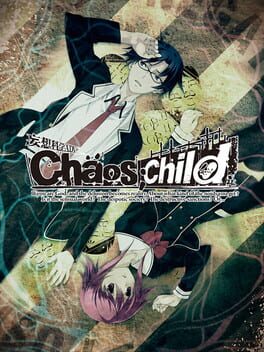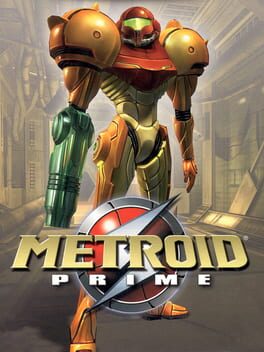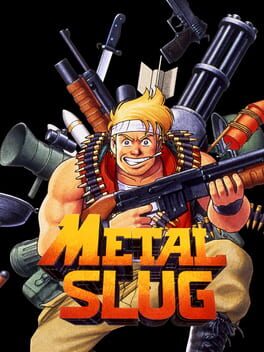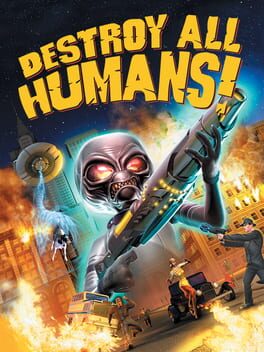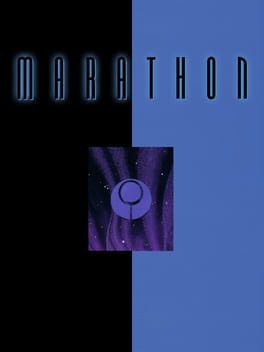UrLocalBanktoad
1599 reviews liked by UrLocalBanktoad
Animal Well
2024
One of the most unique and polished metroidvanias I’ve played. There’s the unique art design, blending pixelated retro graphics with neon colours and modern smoke, fluid and lighting effects, all coming together to give it this very surreal, very serene yet sinister atmosphere. There’s the open ended structure, full of branching paths and skips, I honestly can’t see any two players having the same first playthrough, and it goes without saying that it gives value to subsequent playthroughs. There’s the items, which take an almost Outer Wilds or Tunic kind of approach, where throughout the game you discover you have abilities and functions that you’ll realize were actually there the whole time. There’s the imaginative puzzles, some of which have more than one solution and encourage thinking outside the box. There’s all the surprises and hidden secrets, some of which really drive home the Outer Wilds/Tunic parallels. There’s the lack of tutorials or lines of text telling you what to do, its complete trust in you the player to figure it out yourself. All of this being made by just one guy. Billy Basso really had a thorough creative vision and an exorbitant amount of passion and talent to see it through. I think he’s made something special, I feel pretty confidently like this is among the top 3 metroidvanias I’ve ever played.
Say what you will about Dunkey, but he has a damn good eye for indies and it’s endearing to see him use the platform he’s built to prop up smaller independent creatives like this. I’m excited to see what else Bigmode publishes down the line.
Say what you will about Dunkey, but he has a damn good eye for indies and it’s endearing to see him use the platform he’s built to prop up smaller independent creatives like this. I’m excited to see what else Bigmode publishes down the line.
The Dog Island
2007
Thunder Ray
2023
Unfortunately this game is not good, it's not a worthy spiritual successor to Punch-Out.
It ends up being more trial and error with an emphasis on memorization.
Worst of all is that with low life, a filter covers the entire screen and a dramatic close-up, which makes it difficult to see the patterns, which are inconsistent and not very clear, even more difficult to read at the most necessary moment.
The filter even covers the start menu, making the yellow highlight almost indistinguishable.
One of the bosses is a witch who releases magic, and guess the color... With low health it was better to restart the fight.
It ends up being more trial and error with an emphasis on memorization.
Worst of all is that with low life, a filter covers the entire screen and a dramatic close-up, which makes it difficult to see the patterns, which are inconsistent and not very clear, even more difficult to read at the most necessary moment.
The filter even covers the start menu, making the yellow highlight almost indistinguishable.
One of the bosses is a witch who releases magic, and guess the color... With low health it was better to restart the fight.
The New Tetris
1999
This game is great but the arguments and rants from the developers featured in the games files are better
Breath of the Wild is like ice cream, a sweet treat that a majority of people love, but loses its allure when consumed in excess. Tears of the Kingdom, on the other hand, is like one of those cookie ice cream sandwiches. Just like plain ice cream, they’re pretty damn good, but they’re easier to get tired of and are arguably more divisive.
Tears of the Kingdom takes Breath of the Wild, slams some layers on either side of it and throws in some new stuff and story changes in the middle. It's great but it can certainly be a bit much. For example, the new layers - the sky islands and the depths - are massive additions to the game, but fall a bit flat when fully scoured. There’s a lot of cool stuff in both spots, but when the player delves deeper, they realize that it's a lot of the same cool stuff, making the whole experience a little less magical. Finding an underground coliseum challenge is cool the first time, but the second time? The third time? It's just not the same, and the first time isn’t as powerful as a result.
There’s certainly an argument to be made that the sky islands and depths should have either been fleshed out or shrunk, but maybe the excess isn’t so bad. After all, a vast majority of players aren’t going to be in the game long enough to see this repetition in the first place. Of course, unique content is always better than repetitive material, but in a game like Tears where the player is constantly getting new materials and tools, each new instance of a previously encountered situation or problem is a chance to experiment with new solutions, something that can’t be said for other games with repetitive content. Ideally, the new areas would just have new, unique puzzles, but a game like Tears is a case where it works, or at least can work depending on how the player approaches it.
Speaking of the tools Tears provides, gone are the Sheikah tools from Breath of the Wild, in are the new Zonai tools Link gained from his cool new arm. Rewind allows Link to move an object back in time, primarily utilized to solve puzzles and to gain elevation using fallen rocks, but also has uses in combat. Ascend is pretty simple, it allows Link to swim up through ceilings and pop out on the other side, very useful when exiting the caves, another new addition to Tears. Fuse lets Link attach items to his weapons, shields, and arrows, a cool way to strengthen Link early on, but almost a necessity to ensure fights with stronger enemies don’t take forever. Ultrahand is the big one, it lets Link build machines using his new arm to move things like magnesis did to metal items in Botw. It also allows Link to glue items together. It's a little clunky and the creations push the switch to its limits, but it's the selling point to the game for a reason, and gives the player more options than anything in Breath of the wild. Autobuild is the last new tool, and allows for the recreation of previous machines even without all the materials (at the cost of other materials of course). The camera also makes a welcome return, and works just as it did in Botw. Tears also incorporates most of the Sheikah abilities from Botw in some way. Bomb flowers work kinda like the Sheikah bombs, ultrahand does everything magnesis does and then some, ice flowers and ice weapons can create ice slabs on water, and rewind can freeze items temporarily if turned on and off right away (that one is a bit of a stretch).
The story is in the same format as Breath of the Wild: Link needs to explore the world and collect some memories to put together the whole picture. Unfortunately it doesn’t work quite as well in TotK. Because of how the memories are structured, seeing them out of order doesn’t work nearly as well as it did for the more disconnected ones in Botw. A shame, because the method of collecting dragon tears is far more interesting than simply looking at pictures and locating where they were taken. The order in which things are collected is actually a problem in other aspects of the game; the paraglider is missable now, as it is given after an interaction in lookout landing rather than when leaving the initial area. It's a baffling decision considering how important the paraglider is to exploration. Autobuild is also tied to a completely missable sidequest in the depths, another odd decision when building things is such a huge part of the game.
Tears unfortunately doesn’t fix some of Breath’s biggest issues, such as menuing which is even worse (especially the arrow fusing menu) and weapon durability is even more divisive considering how having good fusible items is almost as important as having weapons to fuse with in the first place.
However, this ice cream sandwich tastes kinda good actually.
For all the issues this game has, actually playing it makes them melt away, especially early on. Tears is not a game meant to be 100%, it's meant to be played as long as the player finds themself engaged. The sheer inventiveness on display here is staggering, Tears allows the player to do and try things that no other games do, and that's an accomplishment. Problems be damned, there’s plenty of fun to be had and memories to be made in Tears, and it deserves the recognition its garnered.
Tears of the Kingdom takes Breath of the Wild, slams some layers on either side of it and throws in some new stuff and story changes in the middle. It's great but it can certainly be a bit much. For example, the new layers - the sky islands and the depths - are massive additions to the game, but fall a bit flat when fully scoured. There’s a lot of cool stuff in both spots, but when the player delves deeper, they realize that it's a lot of the same cool stuff, making the whole experience a little less magical. Finding an underground coliseum challenge is cool the first time, but the second time? The third time? It's just not the same, and the first time isn’t as powerful as a result.
There’s certainly an argument to be made that the sky islands and depths should have either been fleshed out or shrunk, but maybe the excess isn’t so bad. After all, a vast majority of players aren’t going to be in the game long enough to see this repetition in the first place. Of course, unique content is always better than repetitive material, but in a game like Tears where the player is constantly getting new materials and tools, each new instance of a previously encountered situation or problem is a chance to experiment with new solutions, something that can’t be said for other games with repetitive content. Ideally, the new areas would just have new, unique puzzles, but a game like Tears is a case where it works, or at least can work depending on how the player approaches it.
Speaking of the tools Tears provides, gone are the Sheikah tools from Breath of the Wild, in are the new Zonai tools Link gained from his cool new arm. Rewind allows Link to move an object back in time, primarily utilized to solve puzzles and to gain elevation using fallen rocks, but also has uses in combat. Ascend is pretty simple, it allows Link to swim up through ceilings and pop out on the other side, very useful when exiting the caves, another new addition to Tears. Fuse lets Link attach items to his weapons, shields, and arrows, a cool way to strengthen Link early on, but almost a necessity to ensure fights with stronger enemies don’t take forever. Ultrahand is the big one, it lets Link build machines using his new arm to move things like magnesis did to metal items in Botw. It also allows Link to glue items together. It's a little clunky and the creations push the switch to its limits, but it's the selling point to the game for a reason, and gives the player more options than anything in Breath of the wild. Autobuild is the last new tool, and allows for the recreation of previous machines even without all the materials (at the cost of other materials of course). The camera also makes a welcome return, and works just as it did in Botw. Tears also incorporates most of the Sheikah abilities from Botw in some way. Bomb flowers work kinda like the Sheikah bombs, ultrahand does everything magnesis does and then some, ice flowers and ice weapons can create ice slabs on water, and rewind can freeze items temporarily if turned on and off right away (that one is a bit of a stretch).
The story is in the same format as Breath of the Wild: Link needs to explore the world and collect some memories to put together the whole picture. Unfortunately it doesn’t work quite as well in TotK. Because of how the memories are structured, seeing them out of order doesn’t work nearly as well as it did for the more disconnected ones in Botw. A shame, because the method of collecting dragon tears is far more interesting than simply looking at pictures and locating where they were taken. The order in which things are collected is actually a problem in other aspects of the game; the paraglider is missable now, as it is given after an interaction in lookout landing rather than when leaving the initial area. It's a baffling decision considering how important the paraglider is to exploration. Autobuild is also tied to a completely missable sidequest in the depths, another odd decision when building things is such a huge part of the game.
Tears unfortunately doesn’t fix some of Breath’s biggest issues, such as menuing which is even worse (especially the arrow fusing menu) and weapon durability is even more divisive considering how having good fusible items is almost as important as having weapons to fuse with in the first place.
However, this ice cream sandwich tastes kinda good actually.
For all the issues this game has, actually playing it makes them melt away, especially early on. Tears is not a game meant to be 100%, it's meant to be played as long as the player finds themself engaged. The sheer inventiveness on display here is staggering, Tears allows the player to do and try things that no other games do, and that's an accomplishment. Problems be damned, there’s plenty of fun to be had and memories to be made in Tears, and it deserves the recognition its garnered.
Featuring Knuckles from Sonic the Hedgehog 3 & Knuckles!
I love Sonic 3K, and I can see why it's widely regarded as one of the best games in the series, it really feels like the full package of 2D Sonic (...and Knuckles).
While Sonic 2 rewarded speed in the level design, 3K emphasizes exploration again in a similar fashion to Sonic CD; the player needs to track down hidden large rings in a level to gain access to the special stages, where Sonic navigates across a maze-like board to activate blue orbs, while steering clear of red ones. Simple in theory, but certainly tricky at times. I would absolutely recommend going out of your way to do these special stages, because you'll unlock the ability to transform into Super Sonic after getting all seven Chaos Emeralds, and blazing through later levels in the Super Saiyan form is a joy. That's enough talk regarding the special stages though, as the actual main level design is the meat of the game.
With over a dozen different levels with multiple acts, Sonic 3K is the longest entry from the classic 2D games, and it's very nice to see how consistent the quality remains throughout its runtime. I'm not going to bring up every stage here (like in my Sonic 1 review), as I don't have extensive thoughts on all of them. There will also be a bunch of inevitable comparisons to other (Sonic) games, as I bear the curse of only recently becoming a fan in 2024 and those games just happen to be fresh in my memory.
Angel Island Zone is an amazing opening level, as it introduces the player right to the design philosophy of 3K and has many easily accessible special stages and multiple of the newly introduced elemental shields. For those who don't know, the elemental shields replace the shield power-up from the previous games and all are special in their own way. The lightning shield allows Sonic to double jump and attract rings, the bubble shield provides a move similar to Bounce Bracelet in Sonic Adventure 2 and allows him to breathe underwater (so the bubbles aren't required), while the fire shield gives immunity to fire (including lava) and a mid-air dash. In Angel Island Zone no shield is particularly better than another, so it's a good place to try their abilities before using them in later levels which make extensive use of their specific traits. One of those levels is Hydrocity Zone, which follows directly afterwards - here the use of the bubble shield is encouraged, as the bubble placements in the levels are only at certain spots and the ability to freely navigate underwater is very important if you actually want to explore there to find special stages without a rush. Marble Garden is arguably the longest and most confusing stage in the game, but it's still enjoyable in its own way. Carnival Night is plenty of fun to rush through too and has some nice underwater segments, while Ice Cap Zone is one of my favorites in the game with the snowboarding intro and overall satisfying level structure - this is particularly cool, because I was already very fond of Ice Cap in Sonic Adventure 1. Meanwhile, Flying Battery Zone is the result of "what if we made Wing Fortress Zone but actually good", taking the airship aesthetic of that level and making it more fun and sightreadable and Sandopolis is an innovative desert level, where the second half reminded me a lot of Pyramid Cave in Sonic Adventure 2. Afterwards follows Lava Reef Zone, which felt very reminiscent of Celeste's Core to me, but also stood out from the rest with its more vertical level design and great soundtrack, causing it to quickly become a favorite. Everything is rounded off with the Death Egg Zone, which gave me huge SA2 vibes again, as the atmosphere felt quite similar to the ARK levels in that game, same with the gravity switching mechanic. The final boss for 3K was also surprisingly fun compared to the other classic 2D entries, and Doomsday Zone is a great bonus for players who got all the Chaos Emeralds. Man, I love Super Sonic, no matter how basic the idea behind him is.
Sonic 3's soundtrack is an interesting one to discuss, as I completed the game through Sonic Origins, which uses the prototype versions of a few songs, as I believe the licensing for Michael Jackson's songs ran out (don't quote me on this). I don't think those prototype versions are as horrible as some make them out to be, and I actually prefer Carnival Night's prototype rendition to the original. Can't say the same for Ice Cap though, the original song is iconic for a good reason and I love how it ties in with the snowboard section at the beginning. The prototype version just sounds a bit too upbeat for my taste here, considering the original track conveys the gloomy feeling of an icy cave perfectly fine. Putting the differences of MJ and prototype songs aside, some other songs I thoroughly enjoy are Angel Island Zone, Hydrocity Zone (Act 1) and Lava Reef Zone (Act 1).
Even 30 years after its original release, Sonic the Hedgehog 3 & Knuckles managed to provide me with a surprisingly good time and I hope that many more people will continue to play it over the years. I really wish I would have grown up with the Sonic games in my childhood...
I love Sonic 3K, and I can see why it's widely regarded as one of the best games in the series, it really feels like the full package of 2D Sonic (...and Knuckles).
While Sonic 2 rewarded speed in the level design, 3K emphasizes exploration again in a similar fashion to Sonic CD; the player needs to track down hidden large rings in a level to gain access to the special stages, where Sonic navigates across a maze-like board to activate blue orbs, while steering clear of red ones. Simple in theory, but certainly tricky at times. I would absolutely recommend going out of your way to do these special stages, because you'll unlock the ability to transform into Super Sonic after getting all seven Chaos Emeralds, and blazing through later levels in the Super Saiyan form is a joy. That's enough talk regarding the special stages though, as the actual main level design is the meat of the game.
With over a dozen different levels with multiple acts, Sonic 3K is the longest entry from the classic 2D games, and it's very nice to see how consistent the quality remains throughout its runtime. I'm not going to bring up every stage here (like in my Sonic 1 review), as I don't have extensive thoughts on all of them. There will also be a bunch of inevitable comparisons to other (Sonic) games, as I bear the curse of only recently becoming a fan in 2024 and those games just happen to be fresh in my memory.
Angel Island Zone is an amazing opening level, as it introduces the player right to the design philosophy of 3K and has many easily accessible special stages and multiple of the newly introduced elemental shields. For those who don't know, the elemental shields replace the shield power-up from the previous games and all are special in their own way. The lightning shield allows Sonic to double jump and attract rings, the bubble shield provides a move similar to Bounce Bracelet in Sonic Adventure 2 and allows him to breathe underwater (so the bubbles aren't required), while the fire shield gives immunity to fire (including lava) and a mid-air dash. In Angel Island Zone no shield is particularly better than another, so it's a good place to try their abilities before using them in later levels which make extensive use of their specific traits. One of those levels is Hydrocity Zone, which follows directly afterwards - here the use of the bubble shield is encouraged, as the bubble placements in the levels are only at certain spots and the ability to freely navigate underwater is very important if you actually want to explore there to find special stages without a rush. Marble Garden is arguably the longest and most confusing stage in the game, but it's still enjoyable in its own way. Carnival Night is plenty of fun to rush through too and has some nice underwater segments, while Ice Cap Zone is one of my favorites in the game with the snowboarding intro and overall satisfying level structure - this is particularly cool, because I was already very fond of Ice Cap in Sonic Adventure 1. Meanwhile, Flying Battery Zone is the result of "what if we made Wing Fortress Zone but actually good", taking the airship aesthetic of that level and making it more fun and sightreadable and Sandopolis is an innovative desert level, where the second half reminded me a lot of Pyramid Cave in Sonic Adventure 2. Afterwards follows Lava Reef Zone, which felt very reminiscent of Celeste's Core to me, but also stood out from the rest with its more vertical level design and great soundtrack, causing it to quickly become a favorite. Everything is rounded off with the Death Egg Zone, which gave me huge SA2 vibes again, as the atmosphere felt quite similar to the ARK levels in that game, same with the gravity switching mechanic. The final boss for 3K was also surprisingly fun compared to the other classic 2D entries, and Doomsday Zone is a great bonus for players who got all the Chaos Emeralds. Man, I love Super Sonic, no matter how basic the idea behind him is.
Sonic 3's soundtrack is an interesting one to discuss, as I completed the game through Sonic Origins, which uses the prototype versions of a few songs, as I believe the licensing for Michael Jackson's songs ran out (don't quote me on this). I don't think those prototype versions are as horrible as some make them out to be, and I actually prefer Carnival Night's prototype rendition to the original. Can't say the same for Ice Cap though, the original song is iconic for a good reason and I love how it ties in with the snowboard section at the beginning. The prototype version just sounds a bit too upbeat for my taste here, considering the original track conveys the gloomy feeling of an icy cave perfectly fine. Putting the differences of MJ and prototype songs aside, some other songs I thoroughly enjoy are Angel Island Zone, Hydrocity Zone (Act 1) and Lava Reef Zone (Act 1).
Even 30 years after its original release, Sonic the Hedgehog 3 & Knuckles managed to provide me with a surprisingly good time and I hope that many more people will continue to play it over the years. I really wish I would have grown up with the Sonic games in my childhood...
Azure Snake
2019
Kirby's Star Stacker
1997
I know I said Block Ball was close to being one of the best spinoff games I played in this Kirbyathon thus far, until it kinda shit the bed the bit in the endgame, however I think Kirby's Star Stacker actually is the best Kirby spinoff up to this point (behind Dream Course at least).
It's a puzzle game, like Kirby's Avalanche, except this game is way easier in general than Puyo Puyo. Because I suck at Puyo Puyo, I found this more fun. Instead of having to set up complex combos to defeat your opponent, you just have to clear lines with stars in them to beat each stage. Combos are a thing in this game, and they also give you stars depending on how long they are, but they are way easier to perform in this game and technically aren't necessary to beat a stage. Something I do like about these combos tho is, once you start racking up combos, it throws out stars that can get you more lines if your animal buddies are in the right spots. Speaking of them, that's who you're lining up with the stars. Kine, Koo and Rick along with the stars are the main "blocks" in this game. They have a sort of chibi look and it's super cute. There are other blocks too to mix the gameplay up, like bomb blocks that clear a whole row, these blocks you must clear in a line to unlock a star inside and blocks that act like stars but don't give you stars. Use all these blocks efficiently to get the required number of stars you need. It's honestly pretty fun.
Outside of this main mode, you have a VS mode you can play with a friend. Obviously, I didn't touch this, but the other two modes, I did a bit. Those are just clear as many stars as you can till you die, and clear as many stars as you can before time runs out. They're fun little time wasters and just add more content to the game.
This is yet again, another game I technically didn't beat. The game had four difficulties and I beat them all. It got pretty tough at the end of the fourth one, but I was able to complete it. Then a hidden fifth difficulty unlocked, and it had 50 levels! The other difficulties prior only had 16 levels each (besides the easy mode which had 8). I beat the first level of the "insane" difficulty and decided I had my fill, as I probably would start to dislike the game if I did all 50 levels lol.
Not much to say with this one, despite it being one of the better Kirby spinoffs. It's just a fun little time, and more fun than Puyo Puyo imo. I know there's a Super Nintendo version, so if it's just like this game but with improved graphics and music, I know I'll enjoy that too!
It's a puzzle game, like Kirby's Avalanche, except this game is way easier in general than Puyo Puyo. Because I suck at Puyo Puyo, I found this more fun. Instead of having to set up complex combos to defeat your opponent, you just have to clear lines with stars in them to beat each stage. Combos are a thing in this game, and they also give you stars depending on how long they are, but they are way easier to perform in this game and technically aren't necessary to beat a stage. Something I do like about these combos tho is, once you start racking up combos, it throws out stars that can get you more lines if your animal buddies are in the right spots. Speaking of them, that's who you're lining up with the stars. Kine, Koo and Rick along with the stars are the main "blocks" in this game. They have a sort of chibi look and it's super cute. There are other blocks too to mix the gameplay up, like bomb blocks that clear a whole row, these blocks you must clear in a line to unlock a star inside and blocks that act like stars but don't give you stars. Use all these blocks efficiently to get the required number of stars you need. It's honestly pretty fun.
Outside of this main mode, you have a VS mode you can play with a friend. Obviously, I didn't touch this, but the other two modes, I did a bit. Those are just clear as many stars as you can till you die, and clear as many stars as you can before time runs out. They're fun little time wasters and just add more content to the game.
This is yet again, another game I technically didn't beat. The game had four difficulties and I beat them all. It got pretty tough at the end of the fourth one, but I was able to complete it. Then a hidden fifth difficulty unlocked, and it had 50 levels! The other difficulties prior only had 16 levels each (besides the easy mode which had 8). I beat the first level of the "insane" difficulty and decided I had my fill, as I probably would start to dislike the game if I did all 50 levels lol.
Not much to say with this one, despite it being one of the better Kirby spinoffs. It's just a fun little time, and more fun than Puyo Puyo imo. I know there's a Super Nintendo version, so if it's just like this game but with improved graphics and music, I know I'll enjoy that too!
Kirby's Star Stacker
1997
100% stars
100% stacking (very cool)
100% Kirby (੭。╹▿╹。)੭
0% femboy thighs 😭😭😭
I've decided to play this after the Cooler Star Stacker that is its remake on the SNES, intending to experience the endless mode. As intended, it was easy switching my brain to pp Game Boy mode, the game is even easier in fact. The animal friends from 2 are back to help you, they just need to... huh... well, that's the stacking part, don't worry it's not graphic. I love how Kirby is teaching you the rules xDD he's getting too into it. Idk what u talkin about lil guy 😂 im kidding he doin a good job!! Actually he also pointed the board in a Kirby anime meme. We need more charismatic teachers that don't know what they're doing instead of experts who can't teach worth a damn 😂
The gist of it is avoid the top. Very bad. Your ass is not playin Celeste! People who have dabbled in the genre will know this, though. The concept of a mechanic that destroys a row and a column, the concept of matching things, the concept of junk that you can't get rid of because the garbage people only come on Tuesday. So, you're essentially playing a Kirby's Avalanche as an actual game, and that's worth a bright smile. No womp womp give me dat smile🔫 as for the gameplay, it is quite unique, truly taking "no stars will come between us!" both at face value and disregarding the very notion.
There's astory mode Dedede Is Everywhere mode (I have not played this), a time challenge mode (I have not done this), a multiplayer mode (I am chronically solo 👊), meh i only did "challenge" mode, remember? It went on for 50 minutes, so I'd like to believe i am very gud heehee or maybe it's becuz i'm jobless (°O°) as befitting a Kirby title, it is very simple but I was still entertained for a good run. If there were copy abilities, perhaps...yes, perhaps... it might have landed a better rating. At its core, it's very much a simple derivation, so while the gameplay loop might be unique amongst its peers, it's still missing a Kirby component yunno.
100% stacking (very cool)
100% Kirby (੭。╹▿╹。)੭
0% femboy thighs 😭😭😭
I've decided to play this after the Cooler Star Stacker that is its remake on the SNES, intending to experience the endless mode. As intended, it was easy switching my brain to pp Game Boy mode, the game is even easier in fact. The animal friends from 2 are back to help you, they just need to... huh... well, that's the stacking part, don't worry it's not graphic. I love how Kirby is teaching you the rules xDD he's getting too into it. Idk what u talkin about lil guy 😂 im kidding he doin a good job!! Actually he also pointed the board in a Kirby anime meme. We need more charismatic teachers that don't know what they're doing instead of experts who can't teach worth a damn 😂
The gist of it is avoid the top. Very bad. Your ass is not playin Celeste! People who have dabbled in the genre will know this, though. The concept of a mechanic that destroys a row and a column, the concept of matching things, the concept of junk that you can't get rid of because the garbage people only come on Tuesday. So, you're essentially playing a Kirby's Avalanche as an actual game, and that's worth a bright smile. No womp womp give me dat smile🔫 as for the gameplay, it is quite unique, truly taking "no stars will come between us!" both at face value and disregarding the very notion.
There's a
oh actually this DLC wasn't so bad, it goes to show that The Signal was Sam Lake's way of asking how much he could torture the player and being able to get away with it (and also showing that Alan's VA CAN actually act)
380 lists liked by UrLocalBanktoad
by Serious |
16 Games
by zeusdeegoose |
41 Games
by MrWarm |
15 Games
by wheatie |
40 Games
by TimAlien |
240 Games
by wheatie |
25 Games
by NOWITSREYNTIME17 |
26 Games
by imshitting420 |
8 Games


